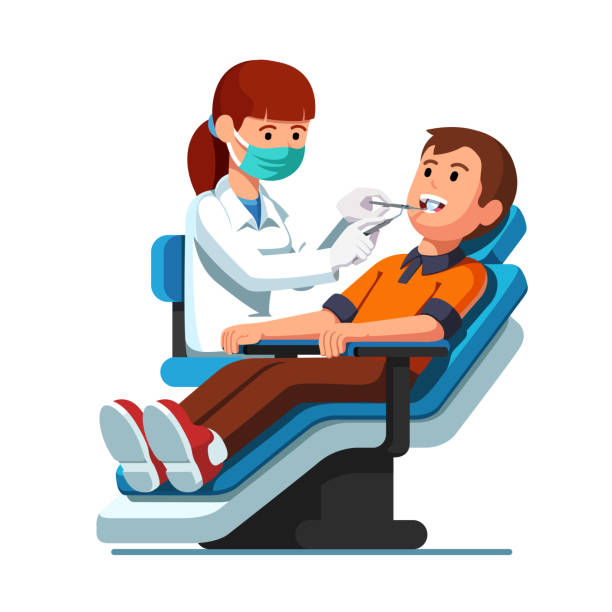An Overview to Typical Oral Conditions That Require a Dental professional's Care
Recognizing the variety of oral problems that necessitate expert treatment is paramount for preserving optimum dental health and wellness. Toothaches, for example, can be symptomatic of serious issues such as cavities, broken teeth, or abscesses, each requiring certain treatments like dental fillings or root canals. Periodontal disease, from the onset of gingivitis to much more serious periodontitis, highlights the importance of normal oral examinations and cleanings. Furthermore, influenced wisdom teeth and jaw problems can introduce substantial discomfort and issues. Making certain prompt visits to the dental practitioner can mitigate these issues effectively, yet what precisely are the therapies and signs involved?
Toothaches
Toothaches are a typical oral problem that can vary from moderate discomfort to serious discomfort, usually suggesting an underlying problem that calls for expert interest. This discomfort can stem from a variety of sources, including tooth decays, split or fractured teeth, and oral abscesses. Each of these problems poses considerable threats if left without treatment, potentially leading to more extreme problems.
Dental dental caries, additionally recognized as cavities, are brought on by the build-up of plaque that erodes tooth enamel, causing holes or pits in the influenced teeth. Split or fractured teeth, on the various other hand, may arise from trauma, grinding, or attacking right into difficult items. These architectural damages can expose the sensitive internal layers of the tooth, creating acute pain and increasing the threat of infection. Abscesses are uncomfortable infections at the origin of a tooth or between a tooth and the gum tissue, generally arising from serious degeneration or without treatment dental caries.
Reliable treatment of toothaches entails addressing the root reason. This might consist of dental fillings for dental caries, crowns for broken teeth, or root canals and anti-biotics for abscesses. Early intervention by a dental professional can stop further wear and tear and ease pain, guaranteeing optimum dental health.
Gum Tissue Condition

The main source of gum condition is microbial plaque, a sticky, colorless movie that continuously develops on teeth. Poor oral hygiene, smoking cigarettes, hereditary proneness, and particular clinical conditions, such as diabetes mellitus, can worsen the danger of establishing gum tissue illness. Regular oral examinations are important for early detection and monitoring of this condition.
Therapy for gum disease varies from expert oral cleaning and scaling to advanced treatments like root planing and gum surgical procedure, relying on the extent. Preserving good oral health practices, consisting of brushing twice daily, flossing, and using a disinfectant mouthwash, can substantially lower the danger of periodontal illness and advertise healthier periodontals.
Dental Caries
Dental caries, likewise understood as cavities, are a typical dental problem identified by the devastation of tooth enamel because of acid-producing microorganisms in the mouth. These microorganisms prosper on sugars and starches from food and beverages, producing acids that progressively wear down the enamel, causing cavity development.
Early-stage tooth cavities might disappoint signs and symptoms, but as they proceed, they can cause tooth pain, sensitivity to warm or cool, noticeable holes or pits in the teeth, and staining. If left untreated, tooth cavities can penetrate deeper layers of the tooth, potentially causing extreme discomfort, infection, and also tooth loss.
Stopping cavities entails a mix of great dental health practices and dietary practices. Routine cleaning with fluoride toothpaste, flossing, and routine dental check-ups are essential. Dental practitioners may likewise advise extra safety nets, such as fluoride treatments and dental sealers, to secure teeth from degeneration.
Minor tooth cavities can be attended to with oral fillings, which bring back the tooth's framework. Much more innovative cases might need crowns or also root canal treatment if the decay has gotten to the tooth's pulp.
Impacted Knowledge Pearly Whites
Affected knowledge teeth are a widespread oral issue that occurs when the 3rd molars, generally described as wisdom teeth, fail to fully arise or straighten correctly within the mouth. This condition commonly arises from insufficient room in the jaw or an unusual growth angle of the teeth. Influenced knowledge teeth can bring about a variety of difficulties, including damages, infection, and pain to adjacent teeth.
When knowledge teeth end up being impacted, they are commonly partly emerged or continue to be totally underneath the gum line. This partial eruption can develop a pathway for microorganisms to go into the gums, leading to infections that show up as swelling, discomfort, and even high temperature (dentist eugene or). Additionally, impacted knowledge teeth can put in pressure on neighboring teeth, potentially triggering crowding or moving
A thorough oral assessment, normally involving X-rays, is important for detecting impacted knowledge teeth. Therapy commonly includes surgical extraction, performed by an oral specialist. The treatment intends to minimize discomfort and protect against further difficulties, such as cysts or damages to surrounding bone structures. Post-operative care is vital to make sure appropriate recovery and minimize the risk of infection. Routine oral check-ups are advisable to keep an eye on the problem and preserve dental health.
Jaw Conditions
Final Thought

Dental dental caries, additionally next recognized as cavities, are triggered by the build-up of plaque that erodes tooth enamel, leading to openings or pits in the influenced teeth. Abscesses are agonizing infections at the root of a tooth or in between the gum and a tooth, typically resulting from severe degeneration or neglected dental caries.
Impacted knowledge teeth are a common dental concern that takes place when the 3rd molars, typically referred to as knowledge teeth, stop working to completely emerge or align correctly within the mouth. Affected knowledge teeth can lead to a variety of problems, consisting of damage, discomfort, and infection to nearby teeth.
In addition, affected knowledge teeth can apply stress on neighboring teeth, possibly creating crowding or changing.